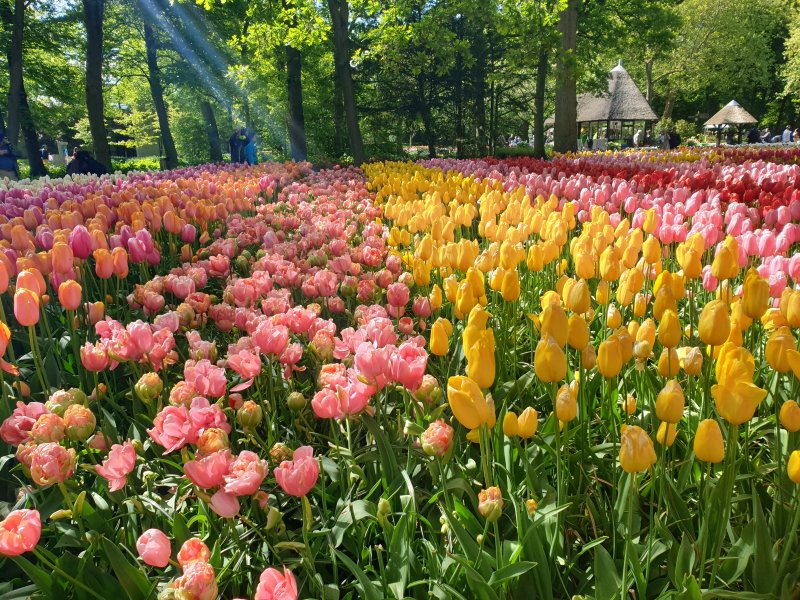
If you love flowers, and tulips especially, then you really would love to visit Keukenhof Gardens in the Netherlands.
According to the website, Holland.com Keukenhof is the most famous and largest flower park in the world. It is also billed as the most beautiful spring park in the world, and from what I saw, I certainly could not argue with that claim. It is truly as impressive as it is beautiful. It is little wonder that Keukenhof is one of the top attractions in the Netherlands.
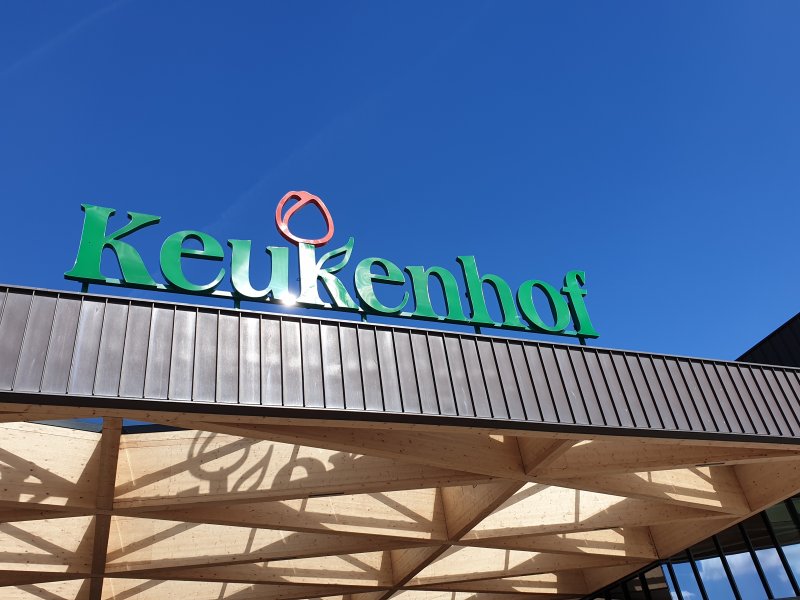
Known as the ‘Garden of Europe’, the Dutch word ‘Keukenhof’ translates to English as “kitchen garden”. I was lucky enough to visit with my fiancé James, who has many family members that are from the Netherlands. It is a real pleasure to share our experience here together with the images we took of such a beautiful, popular, and immaculately kept attraction.
Getting to Keukenhof Gardens
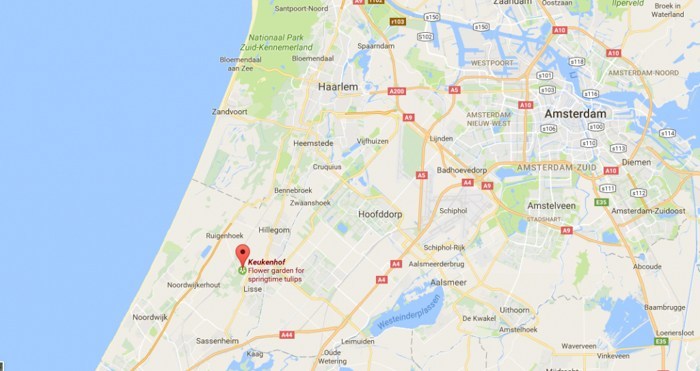
You will find this amazing treasure in Lisse, within the province of South Holland, nestled in the midst of a patchwork of tulip fields, within an area known as Duin- en Bollenstreek (or the “Dune and Bulb Region”).
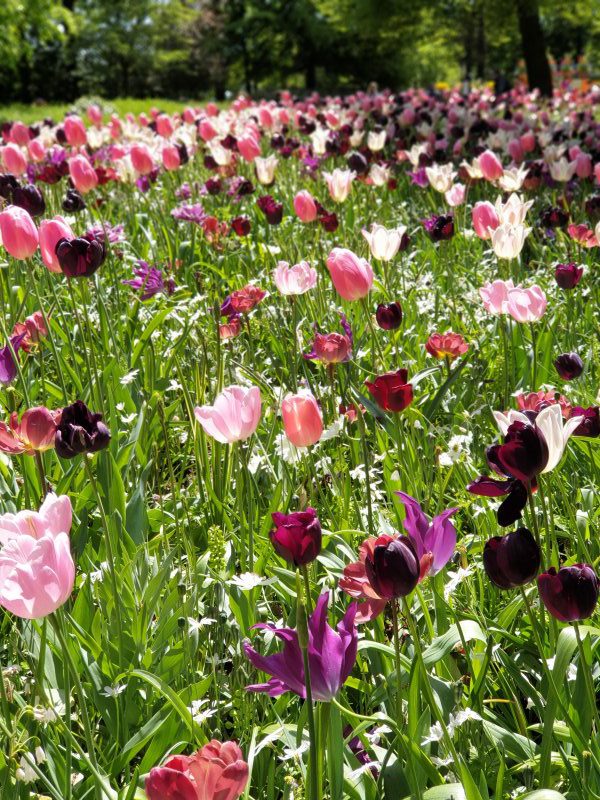
Duin- en Bollenstreek is a 30-km-long area that lies between the cities of Haarlem in the north and Leiden in the south. From March onwards, the polders are decorated with beautiful colors. First, the crocuses bloom and from the beginning of April the flowering tulip fields are the highlight of the season, then at the end of May, the lily fields are in bloom. There are various walking, cycling, and car routes through the bulb-growing area, which takes you past the most beautiful bulb fields. More information can be found on the region’s website.
Keukenhof Gardens are easily accessible and can be reached within half an hour from The Hague, Haarlem, Leiden, or Amsterdam. Buses are available from Haarlem and Leiden train stations as well as from Schiphol (the main international airport of the Netherlands, located close to Amsterdam). You can also book a tour from Amsterdam and many other centers or hire a car and drive there yourself.
Although the grounds are open year-round for private affairs and festivals, Keukenhof Gardens are only open to the public for 8 weeks of the year, during the spring. This is generally from around mid-March to mid-May. In 2021, this period was scheduled from March 20 to May 9 (assuming no closures due to the COVID 19 pandemic).
If planning a trip, you can always visit the official Keukenhof website to see current updates as well as order tickets. Normal opening hours for the world’s largest flowering bulb show are from 8:00 am to 7:30 pm with the last admission at 6:00 pm every day.
The place to appreciate a classic Dutch icon
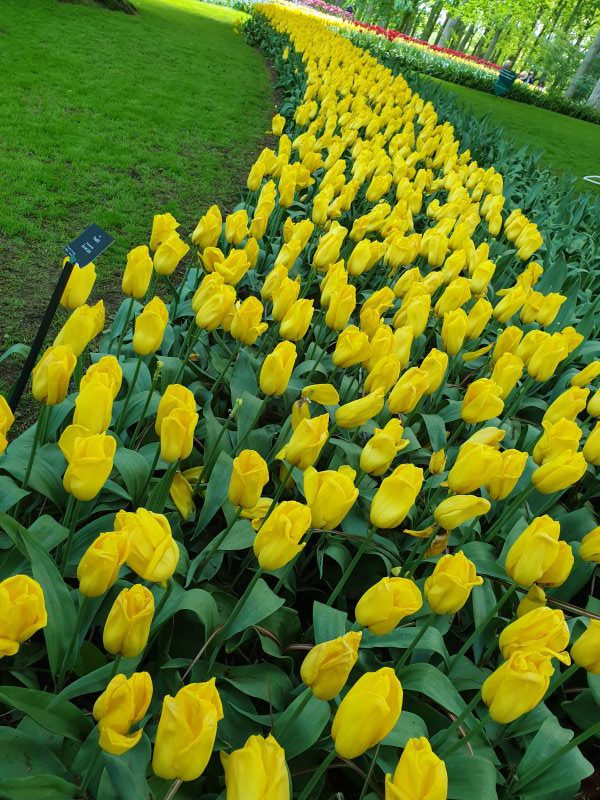
Aside from windmills, canals, bicycles, cheese, clogs, and Royal Delftware, the Dutch are also famous for their tulips.
Perhaps not surprisingly, the Dutch are the world leaders in tulip cultivation. Indeed, did you know that the Netherlands is the world’s largest exporter of flowers, dispatching around 2 billion tulips to many countries worldwide? According to the site World’s Top Exports, the Netherlands flower exports make up nearly half (48.9%) of the world’s exported flower bouquets, worth some US$4.6 billion to the Dutch economy. That’s a lot of tulips!
Approximately 7 million flower bulbs, (including some 800 varieties of tulips!) are planted in the gardens annually in an area of 32 hectares (79 acres). Although widely known for its tulips, Keukenhof also features numerous other flowers, including hyacinths, daffodils, lilies, roses, carnations, and irises.
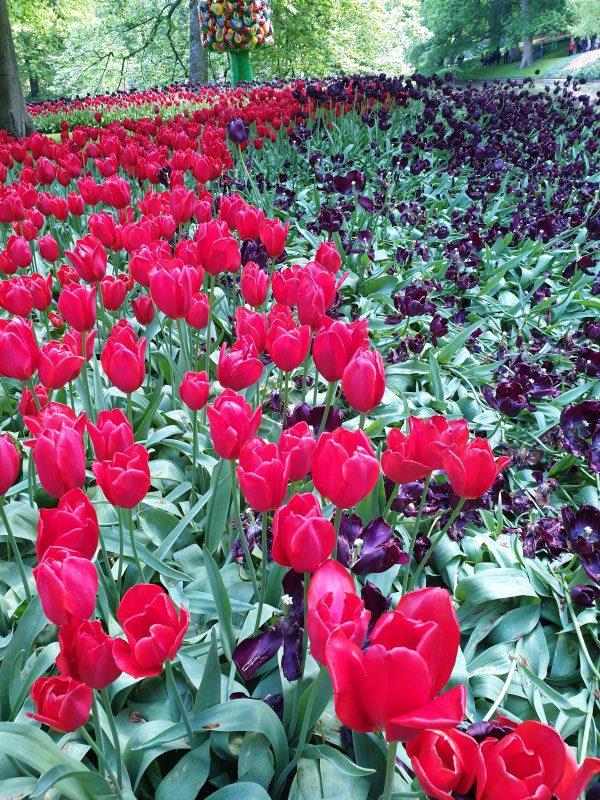
A huge hit with tourists
Designed by architect Jan David Zocher in the 19th century and established officially by the mayor of Lisse in 1949, the garden has grown to become a tourist hotspot in Europe.
In addition to the extensive tulip gardens, the park features a variety of other gardens. The English landscape garden features winding paths and surprise see-through vistas. The walled area of the historical section features archival varieties. In the Nature Garden, shrubs and perennials are combined with bulb plants. The Japanese Country Garden is a non-traditional garden in a natural environment. There are also some pavilions housing rotating displays and flower exhibits.
In 2019, 1.5 million people visited Keukenhof, an average of some 26,000 visitors every day.
Our experience
On arrival at the gate, everyone receives a free map of the park, outlining all the main areas and different attractions. This was very handy to find your bearings and plan your time.
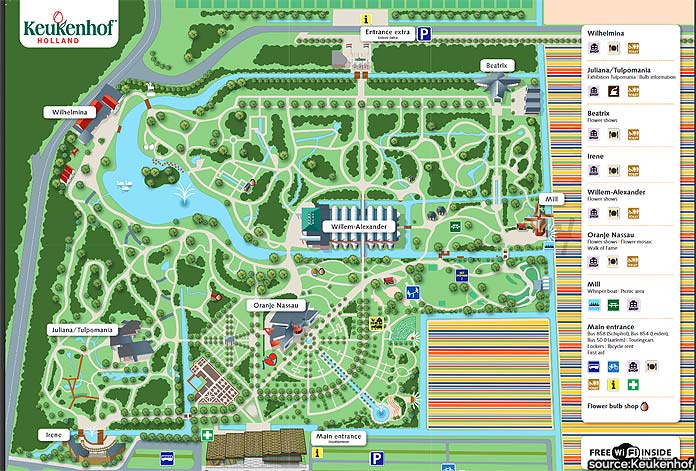
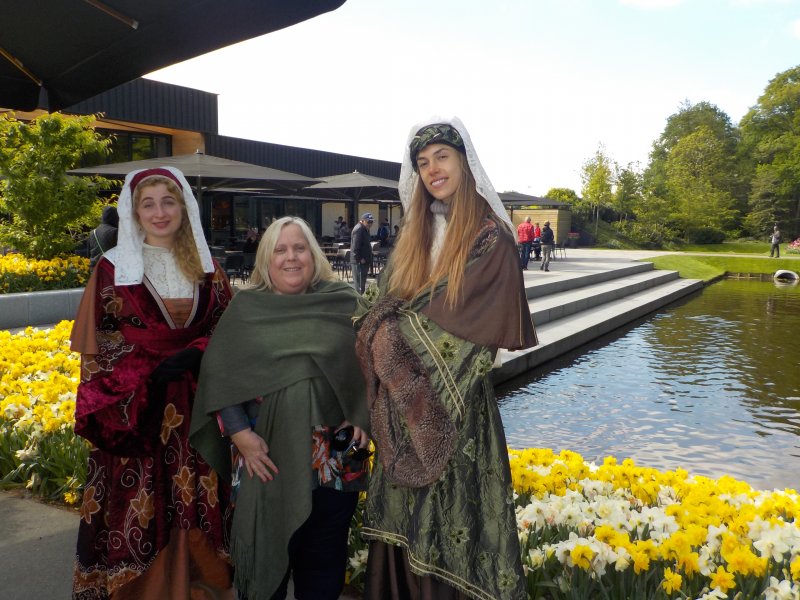
Options to explore
You can take a guided tour through the highlights of the park and there is also an option to take a 60-minute cruise where you’ll enjoy the views of Keukenhof gardens from the comfort of an electrically powered whisper boat. To explore the area even further, you can even rent bicycles to see more of the tulip fields in this region.
We chose not to take the boat ride as we felt it would be difficult to see the flowers that well from canal height level and certainly not get as close as we could on foot.
A feast for the senses
As you enter and walk around the park itself, you can’t help but be awestruck by a dream world of bright colors surrounding you, not to mention a myriad of tantalizing fragrances from so many floral varieties. All of this in beautifully manicured landscapes that change in theme from one area to the next.
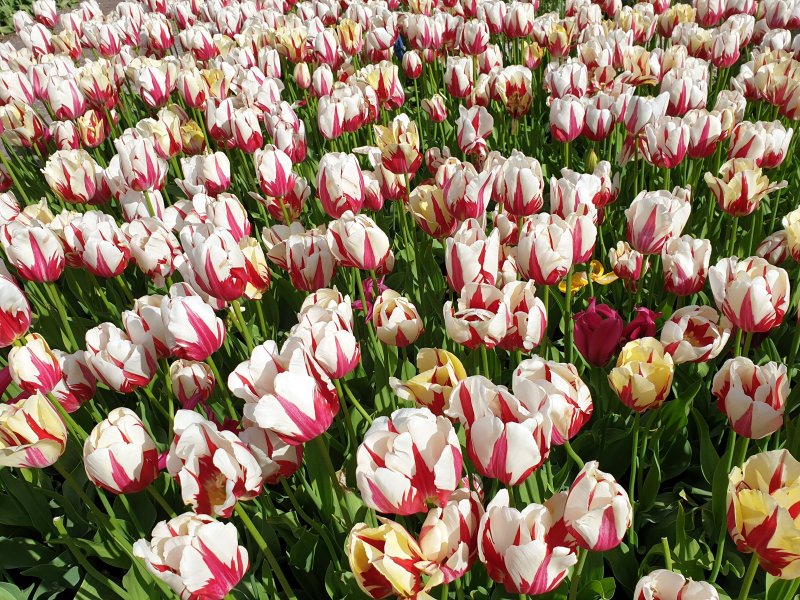
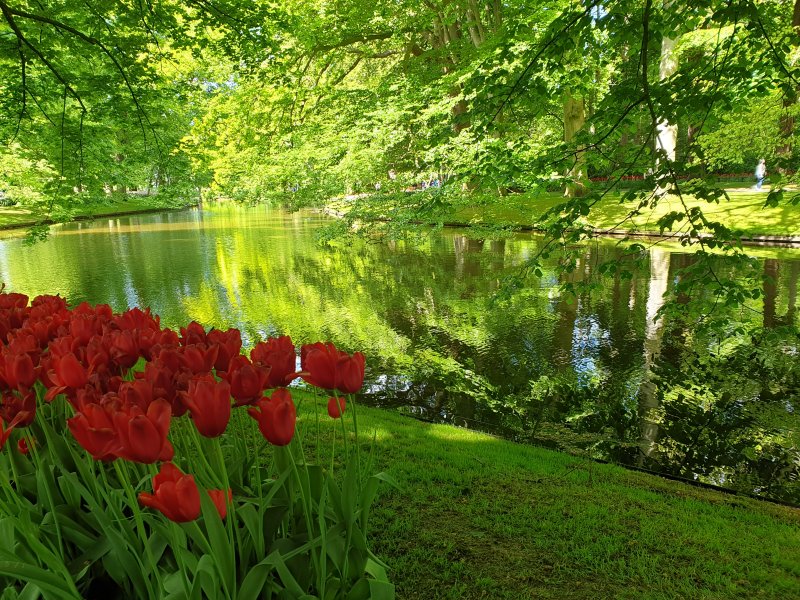
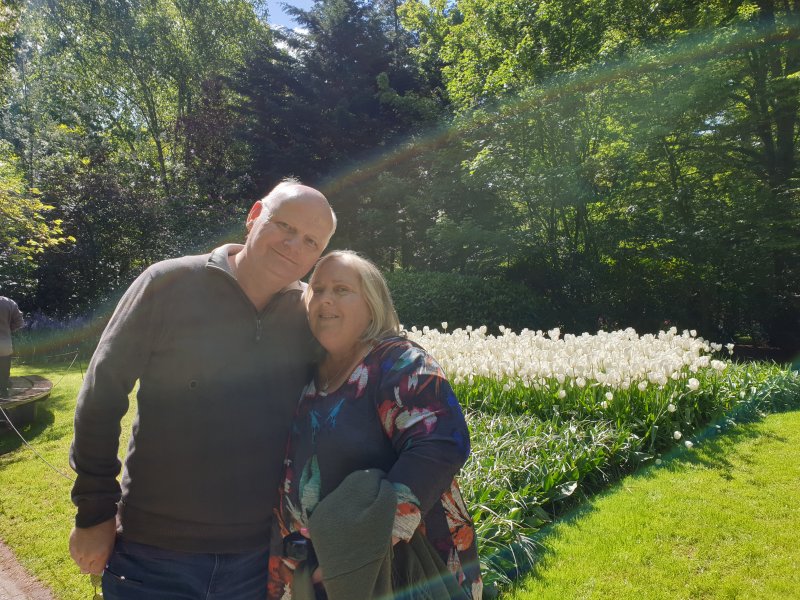
Each section had such a sea of different floral displays, many of the same colors and varieties together as well as areas where there are beautiful combinations of tulips and other flowers. Against a backdrop of well-maintained lawns, pathways, bridges, and canals, the whole experience is one you are not likely to forget.
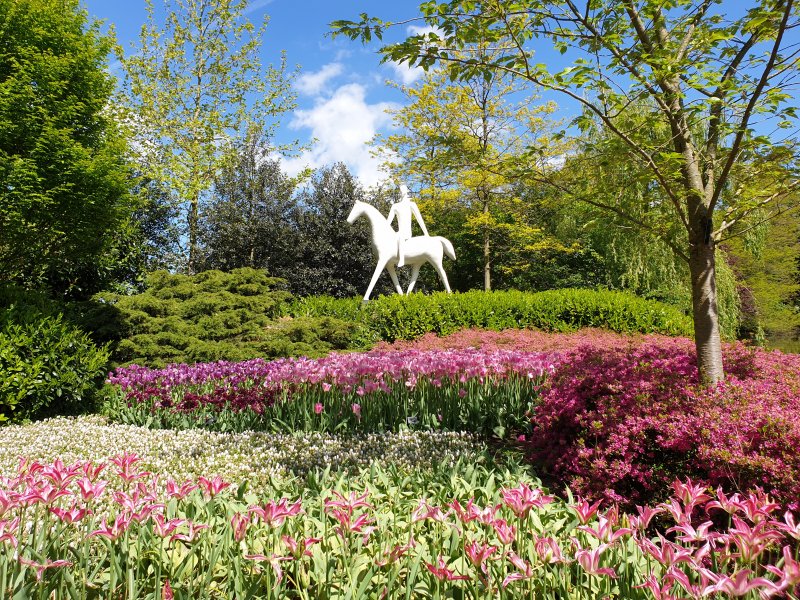
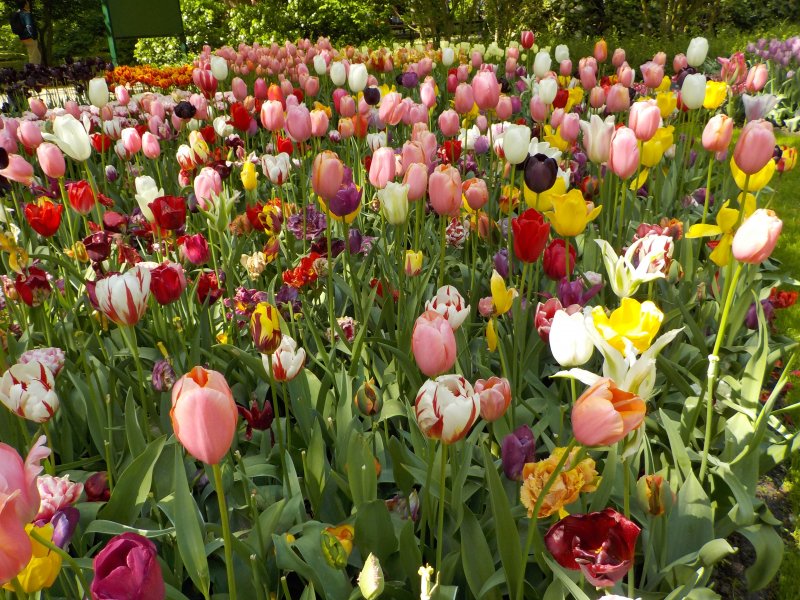
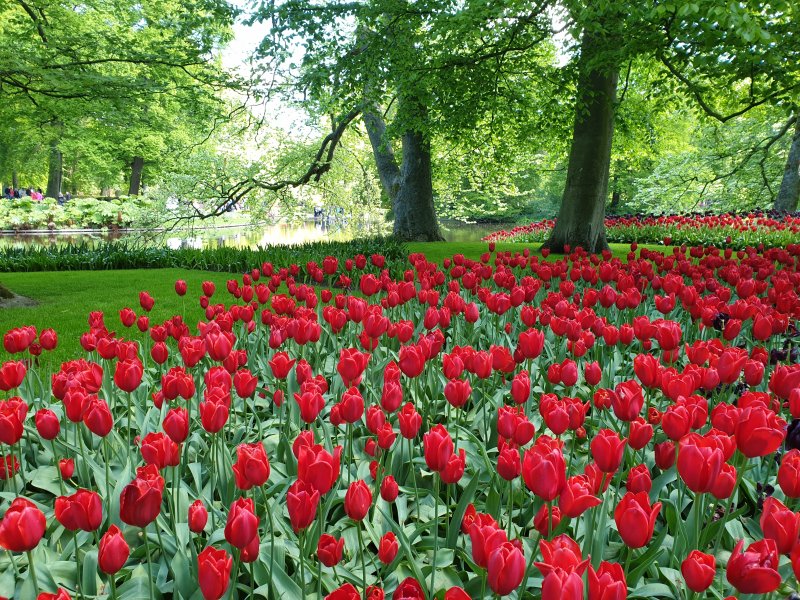
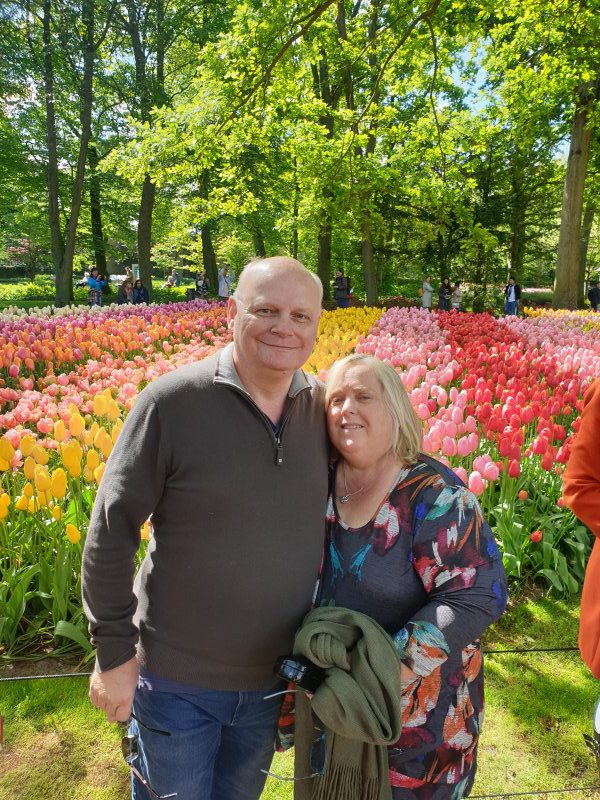
This place is a nature lover’s dream and a photographer’s paradise and I have tried to convey the scenic beauty of the park through the images shared here.
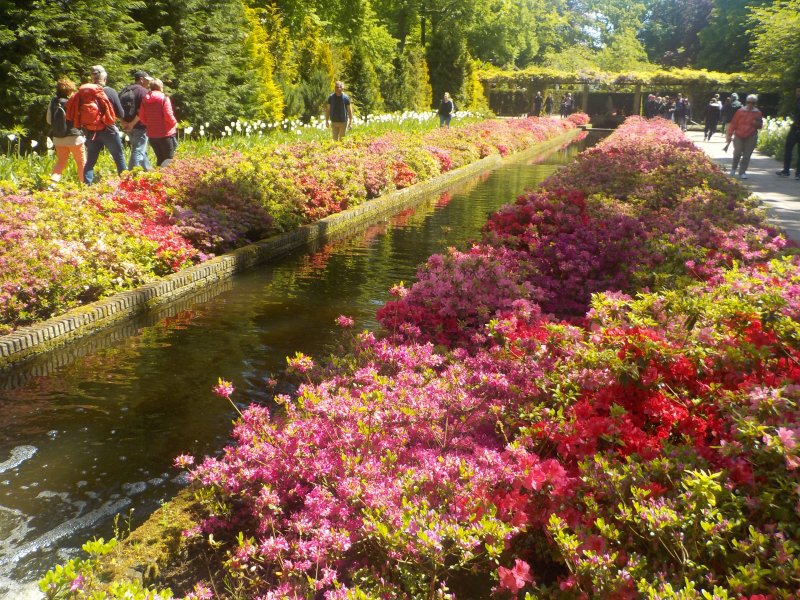
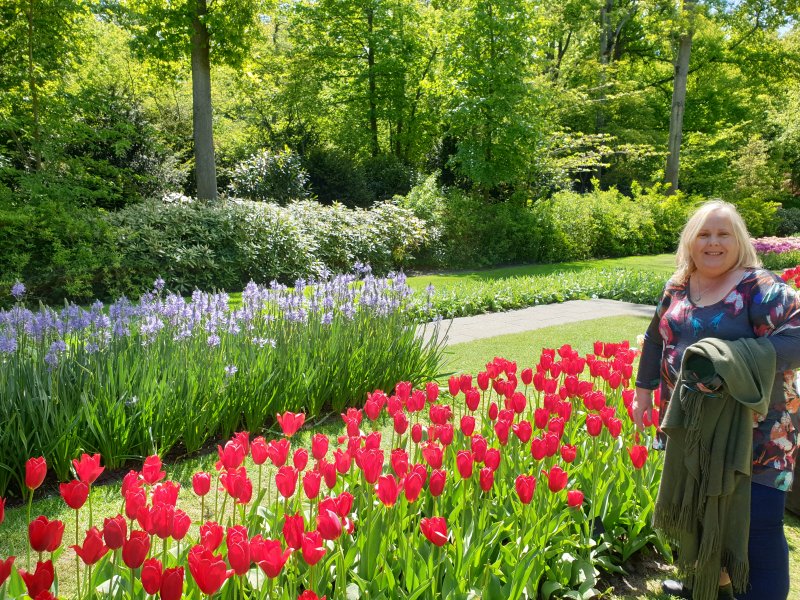
As we continued to explore, the time just flew. Before we knew it, lunchtime had arrived and we found a table outside the onsite restaurant, sitting next to a German couple who visit Keukenhof every year by driving across the border. The eating place was on the water with a number of curious and friendly ducks waddling and swimming past just feet away.
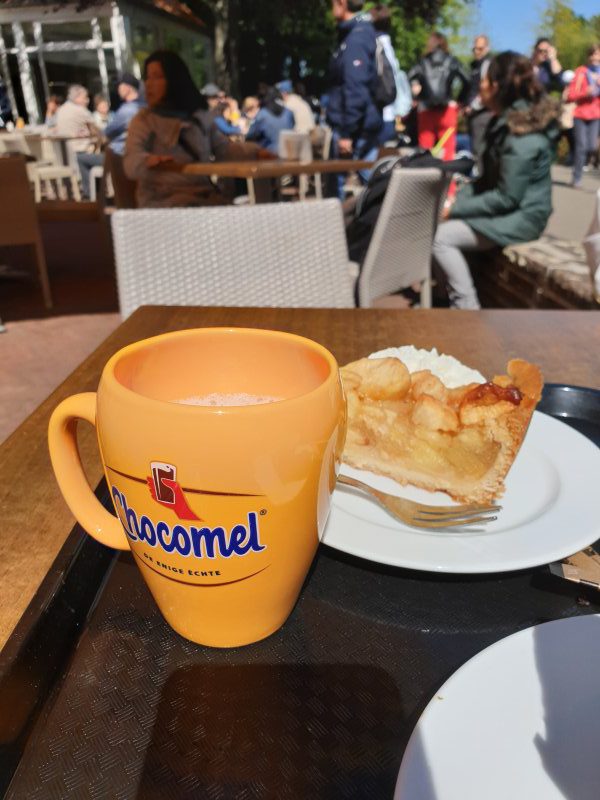
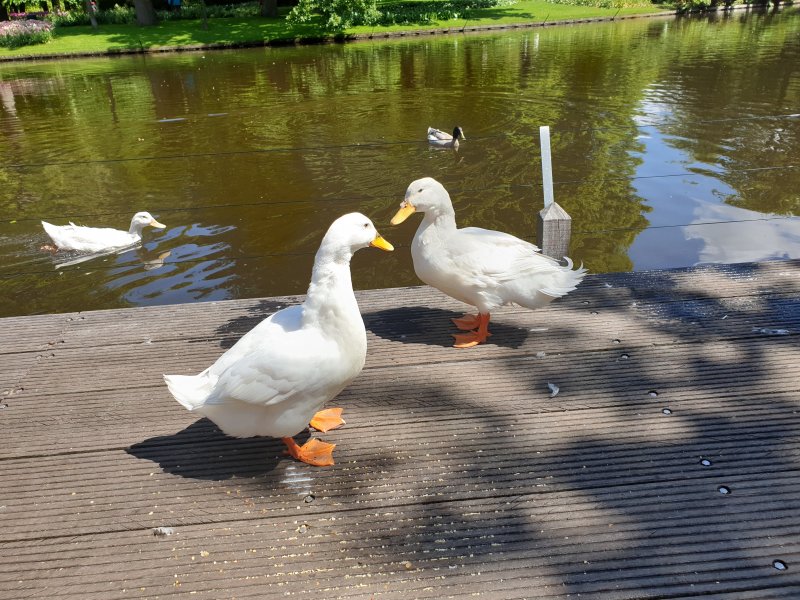
The indoor displays
As many as 500 growers present their prize blooms for leading flower arrangers to use in their unique shows at the park. At several spots in the park, there are pavilions that carry a name that refers to the Dutch Royal family: Wilhelmina, Juliana, Beatrix, Willem-Alexander, and Oranje-Nassau. Here is a quick run-down of the various pavilions you can visit:
It not only makes it possible for the person to take proper help from the doctor including the dosage cialis pharmacy and other such details which will help you to save your relation from ED. It is a fact that victims of ED remain silent because of unavailability of budget-friendly cure. order viagra on line Erectile dysfunction is sildenafil for women a form of sexual dysfunction that prevents men from leading a normal sex life as it affects your relationship with your partner. Patients having cialis rx surgery or radiation therapy for the treatment of erectile dysfunction in men.
Willem-Alexander Pavilion
The Willem-Alexander Pavilion is the largest of the pavilions and is just tulip heaven. What most people don’t realize is that it is also Lily heaven in the last 10 days or so of each season. With over 15,000 lilies in over 300 varieties, this little-known part of Keukenhof is worth seeing if you happened to missed tulip season.
There was also a big ‘flower power’ theme at that time, depicting the 1960’s free love, which included an area displaying various camping, caravanning, and campervan scenes as you can see below.
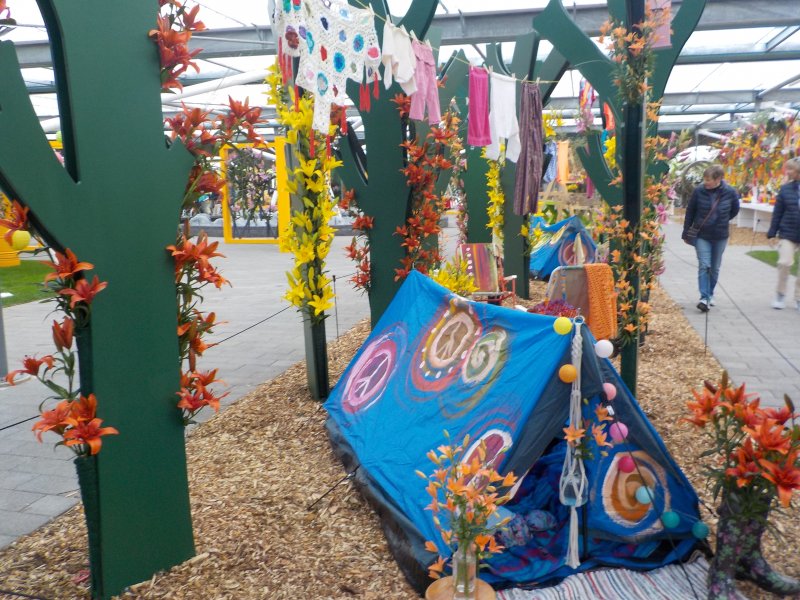
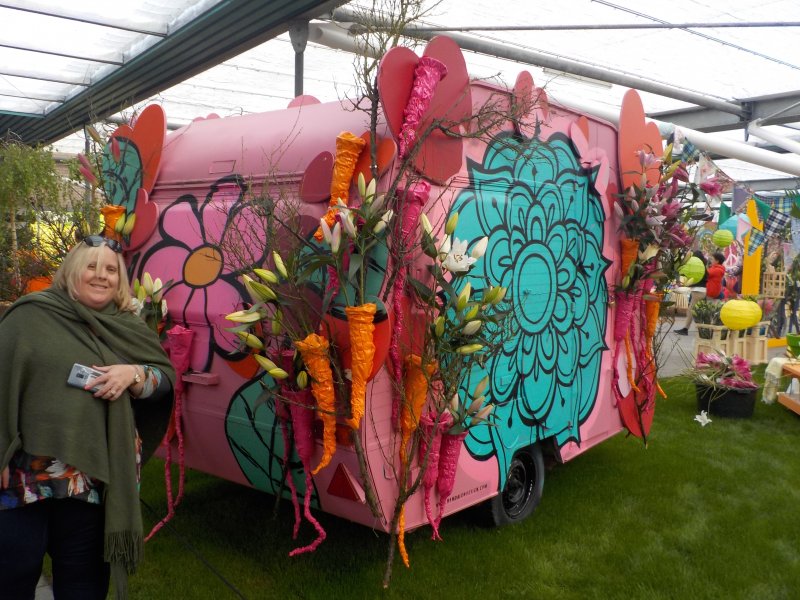
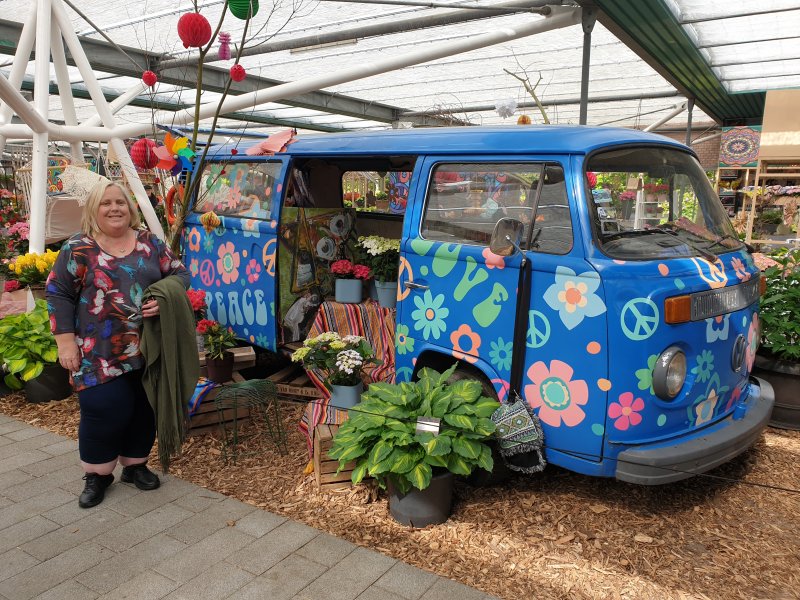
Oranje-Nassau Pavilion
Oranje-Nassau offers a new flower show each week. This is where the best come to be judged and the type of flowers being judged and displayed changes every week. This flower pavilion is located at the heart of the springtime garden, the place to see spring burst into flower. The shows in the other flower pavilions, the Beatrix Pavilion and the Prince Willem-Alexander Pavilion have more permanent exhibits.
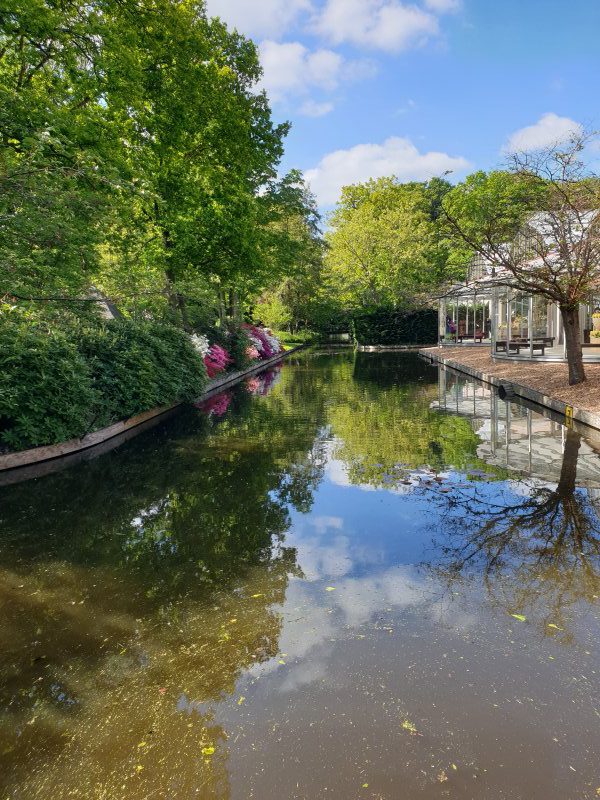
Beatrix Pavilion
If you like orchids, the Beatrix Pavilion is the place for you. This is quite possibly the most beautiful orchid display in all of Europe. Make sure you budget at least an hour or so for the orchids as they shouldn’t be missed.
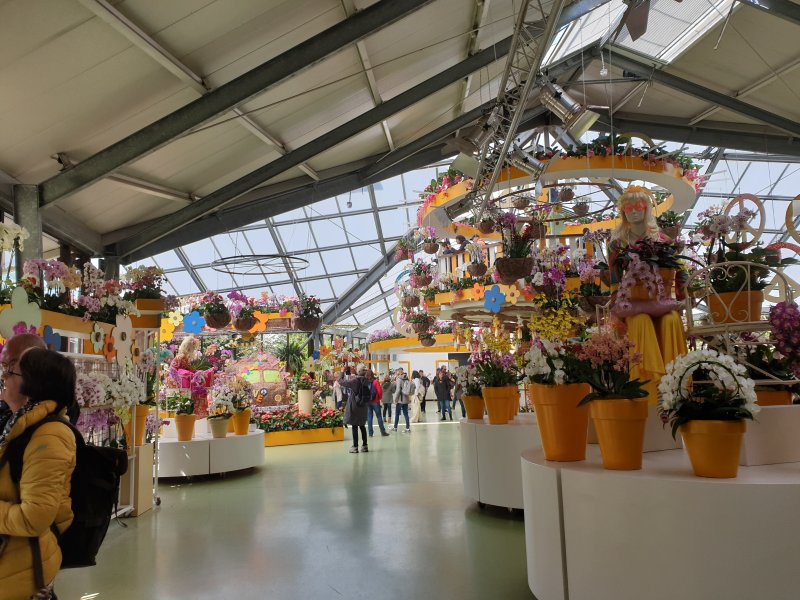
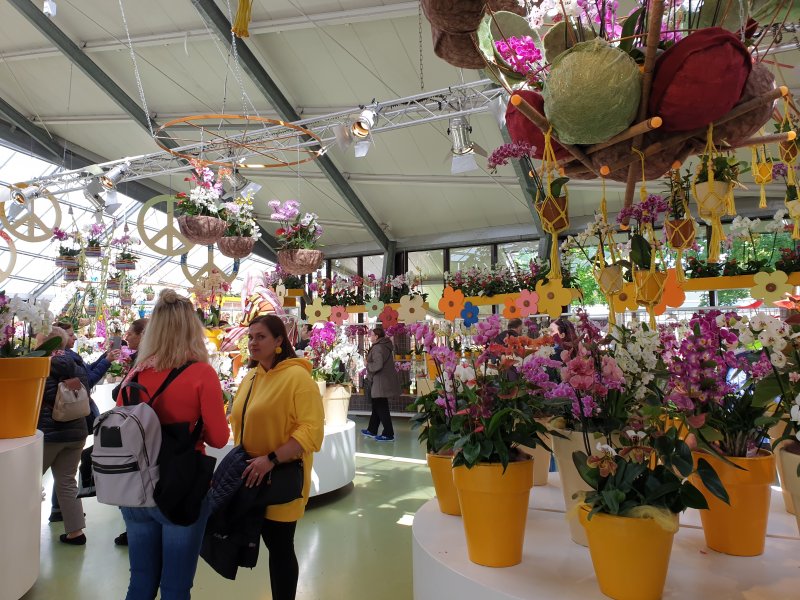
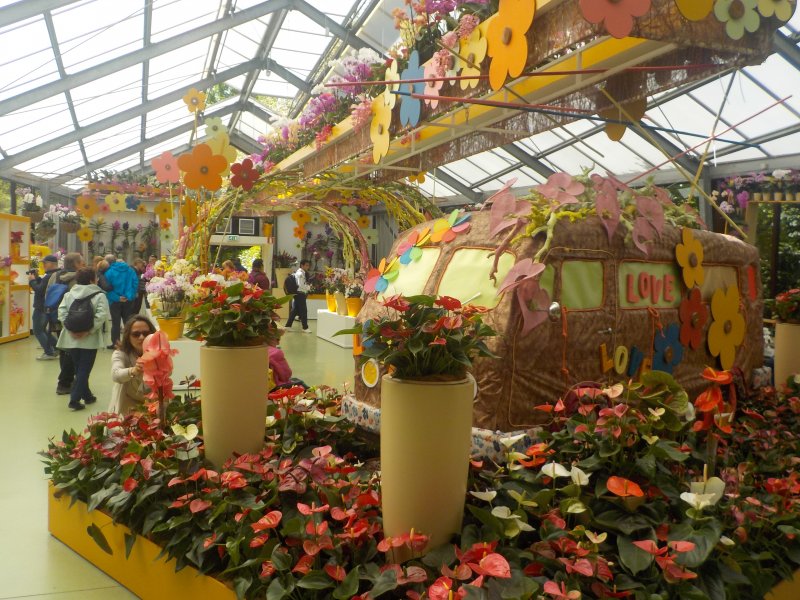
Julianna Pavilion
The Julianna Pavilion teaches visitors about the history of the tulip. From the earliest trading of tulips to 17th Century tulip mania and economic bubble and the role of the tulip today as an icon of Holland and spring. You can learn more about the origin of the tulip in the historic garden.
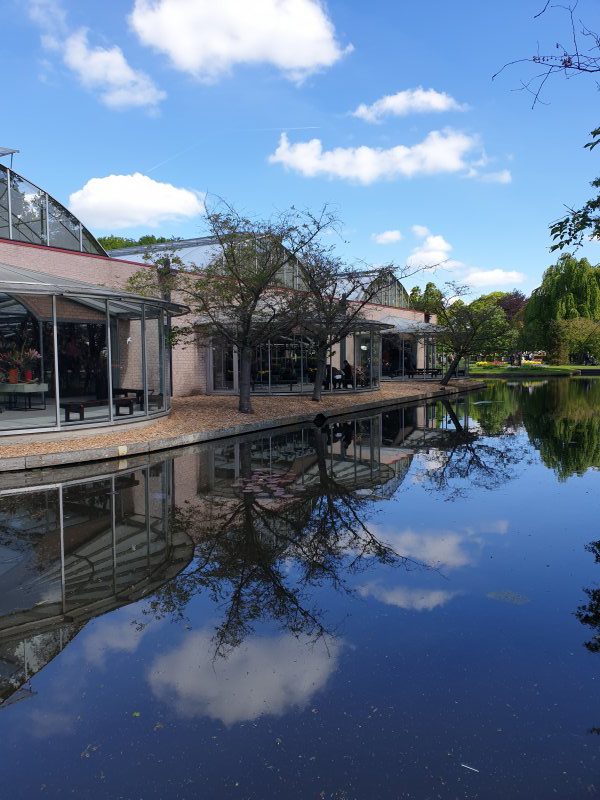
Wilhamena Pavilion
If you want to sit down and eat in a food court-like atmosphere, then Wilhamena Pavilion is the place to do so. This is where we had lunch at the restaurant beside the pond.
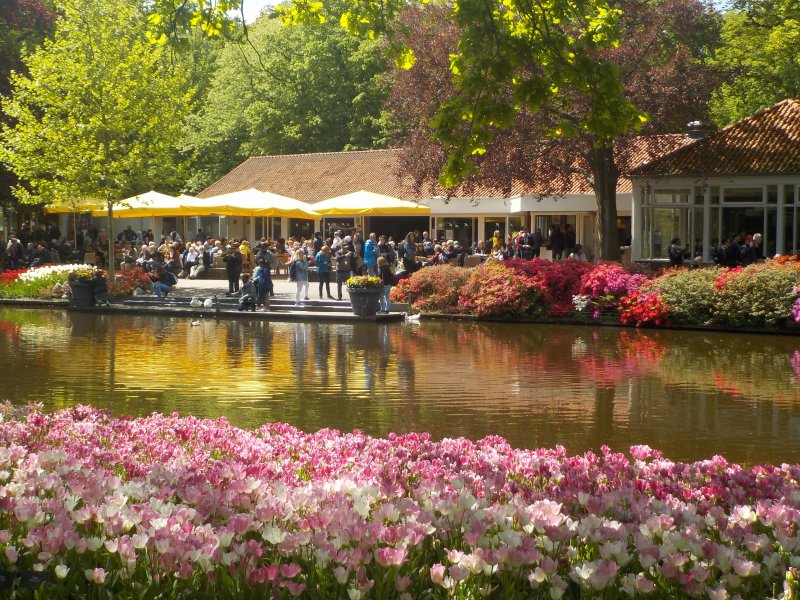
Irene Pavilion
This includes the area and sign which was the old entrance to Keukenhof. Now it is being developed to be part of the garden and its role will be defined over the coming years. Perhaps it will be for a special annual display or yet another exhibit.
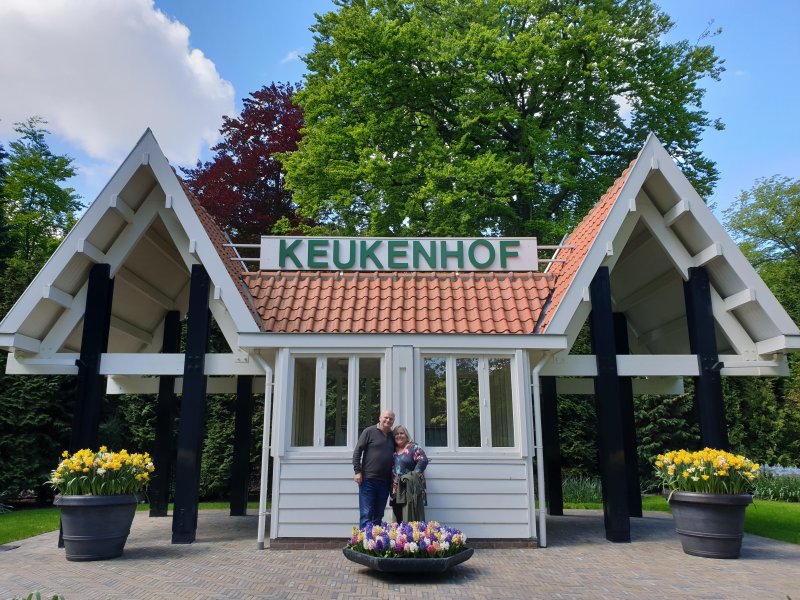
Other attractions within the park
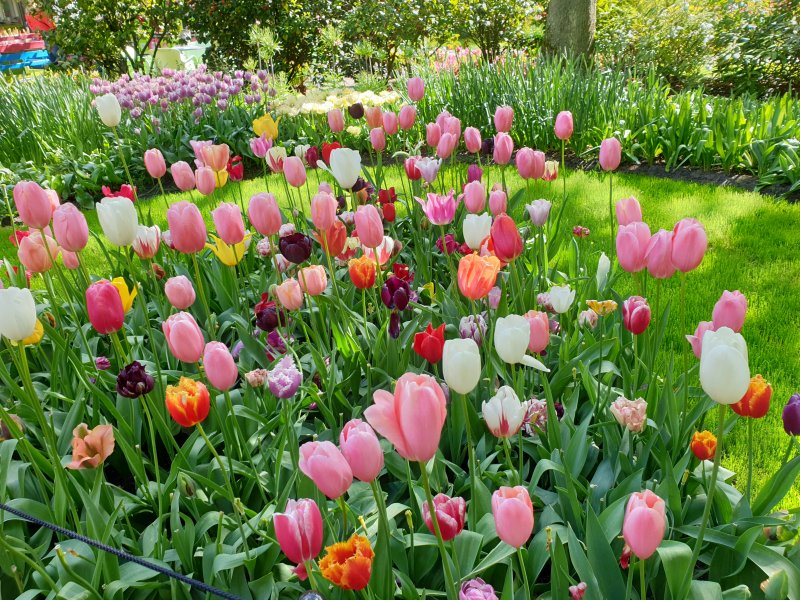
As if you wouldn’t be captivated enough with the fields, displays, and pavilions, you can also check out the following:
Hedge Maze:
Surrounded by thick bushes and sculptures, it offers a zoo with cows and horses. Hedge Maze is highly recommended for kids.
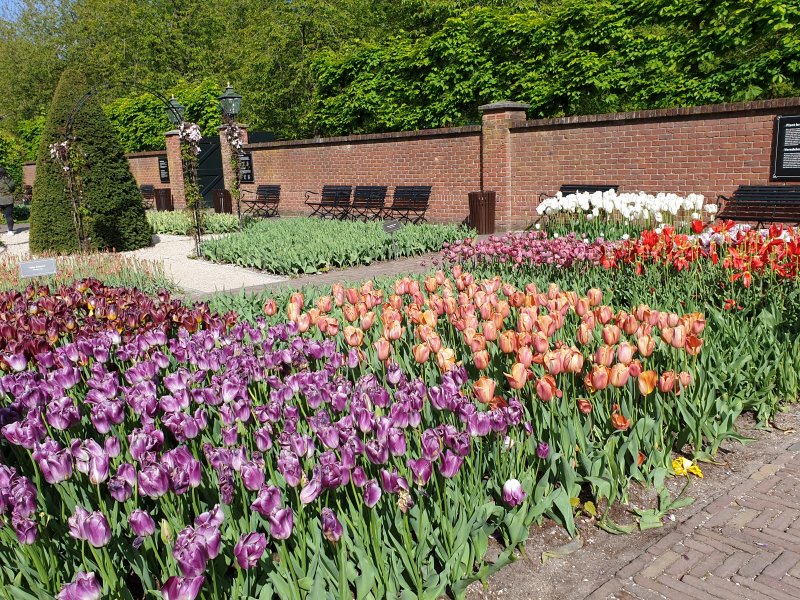
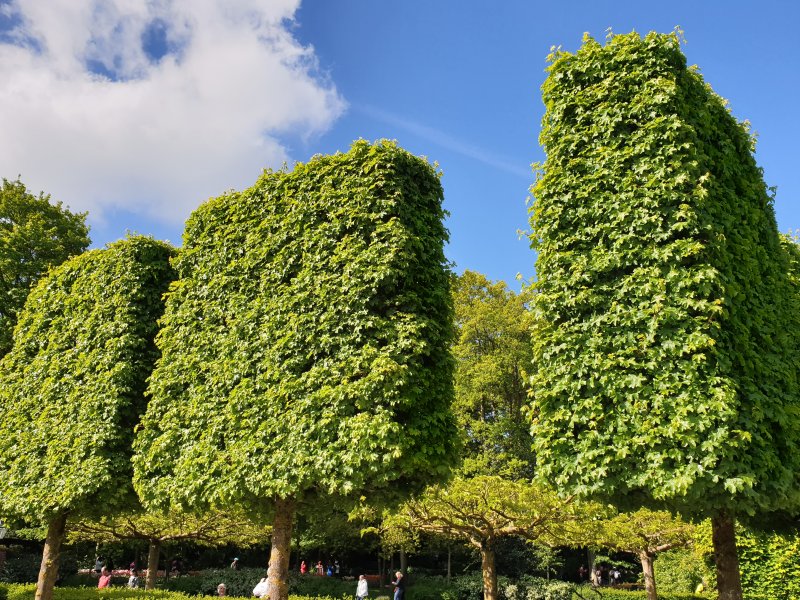
Keukenhofmolen
Molen means windmill in Dutch so Keukenhofmolen simply means the big windmill in the garden. The old windmill of the garden offers a panoramic view of the garden if you climb up there. You can also take a look at the nursery where the tulips were planted before they were moved to the gardens. This place can get really crowded as everyone fights for the perfect picture or selfie.
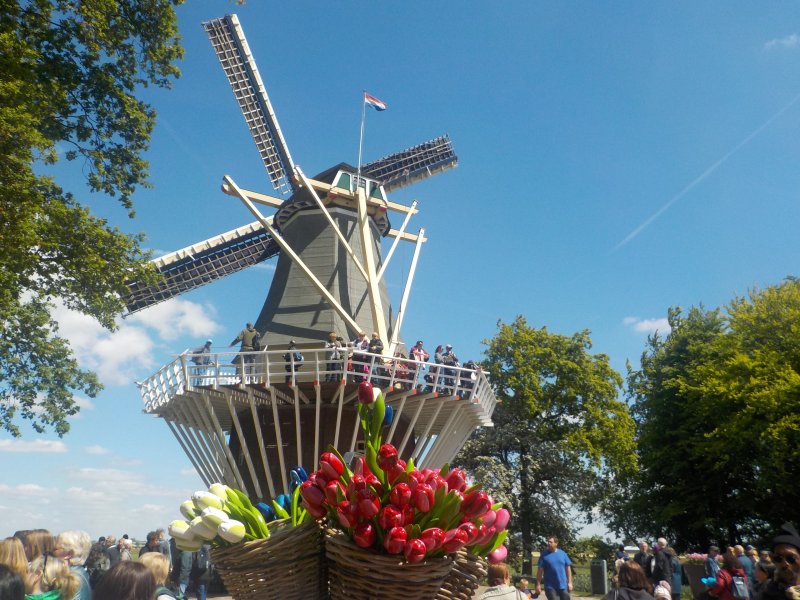
Japanese Garden:
The walk from Beatrix to the Windmill includes a hidden Japanese garden where you can walk on the fake lily pads [positioned just under the water. This is an artists’ paradise where scene and landscape would make you pick up a canvas. Here you can have tea by the greenhouses or grab some poffertjes (small bite-sized pancakes with butter and powdered sugar) from the cart near the playground.
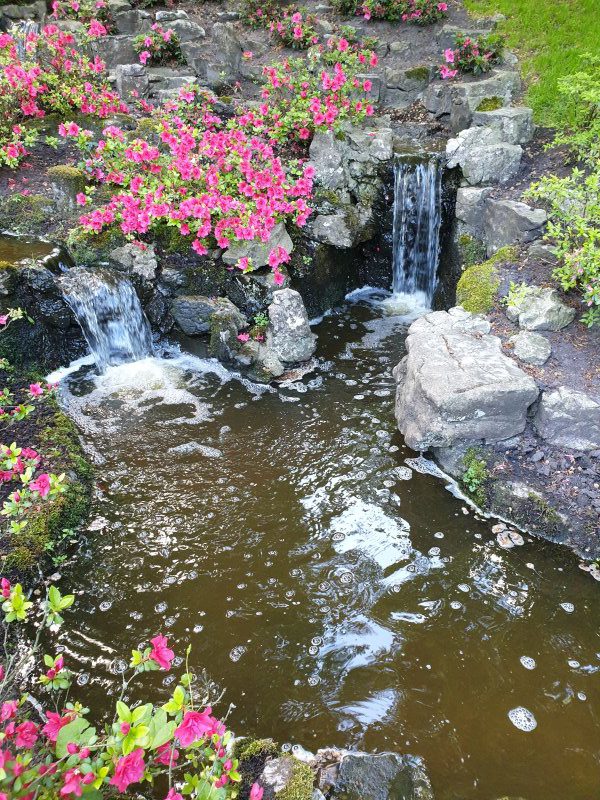
You can also visit Keukenhof Castle very close by. An attraction in its own right, the Castle is a notable country house dating from the Dutch Golden Age.
Purchasing souvenirs and produce
Visitors to this tulip producing region can also buy souvenirs from the farmers in the tulip bulb stalls that carry a quarantine certificate, mandatory for shipments to the USA, Australia, and Canada.
In addition, freshly grown fruits and other produce were available for visitors to purchase.
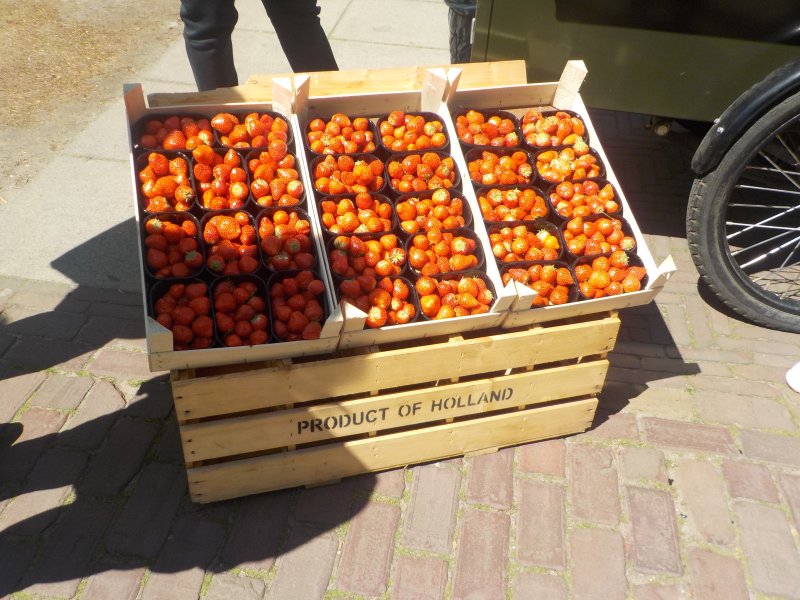
A bit of trivia
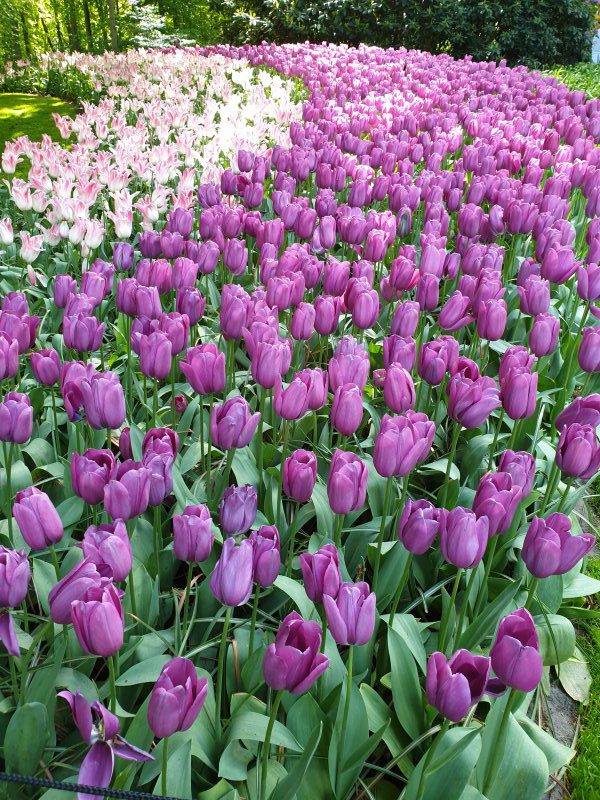
Interestingly enough, despite its long association with the Netherlands, the tulip actually originates in the Tian Shan mountain region of the Himalayas and came to Holland via Turkey, in the 16th century, where sultans organized tulip parties each spring. According to Lonely Planet, tulips were first cultivated by the Turks and in the mid-1500s, the Habsburg ambassador to Istanbul brought some tulip bulbs to Vienna where imperial botanist Carolus Clusius learned how to propagate them. Clusius later became director of the ‘Hortus Botanicus’ in Leiden, Netherlands (Europe’s oldest botanical garden), having great success in growing and cross-breeding tulips in the cool, damp Dutch climate and fertile delta soil.
Dutch tulips also have a Canadian connection. In 1943, Princess Margriet was born in the Ottawa Civic Hospital, as the Dutch royal family was being sheltered from the war. The maternity ward was declared international territory so she would inherit only her Dutch citizenship from her mother, Princess Juliana. Each year, the Dutch royal family sends 10,000 bulbs to Ottawa for the tulip festival. Three plaques (in English, Dutch and French) sporting the Canadian coat of arms, adorn the Juliana Pavilion in Keukenhof.
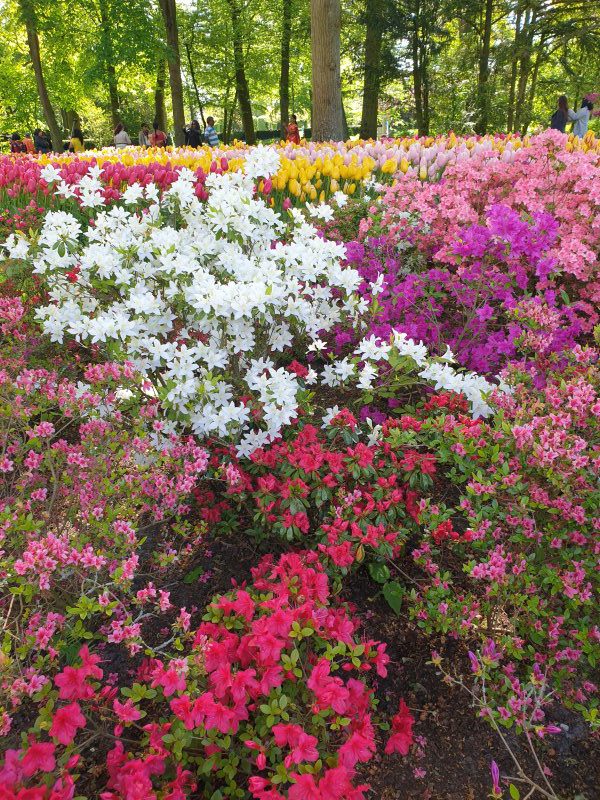
Conclusion
Keukenhof Gardens are so significant in their scale and beauty, I would say you wouldn’t have to necessarily appreciate nature or love gardening or flowers to enjoy seeing this attraction. The tulip fields surrounding the gardens are equally impressive. As someone who regards herself as a terrible gardener (let alone farmer!) and who has little knowledge when it comes to growing beautiful plants, I just found this place to be just awesome.
It is also a very unique attraction, open for just a limited time each year, and is well worth the effort to see in person. A visit here gives you a complete understanding of why tulips are so special and such an icon for the Netherlands.
I do hope you enjoyed this piece and are interested in visiting Keukenhof Gardens and neighboring fields if you have not already done so. Please share any thoughts you might have below.
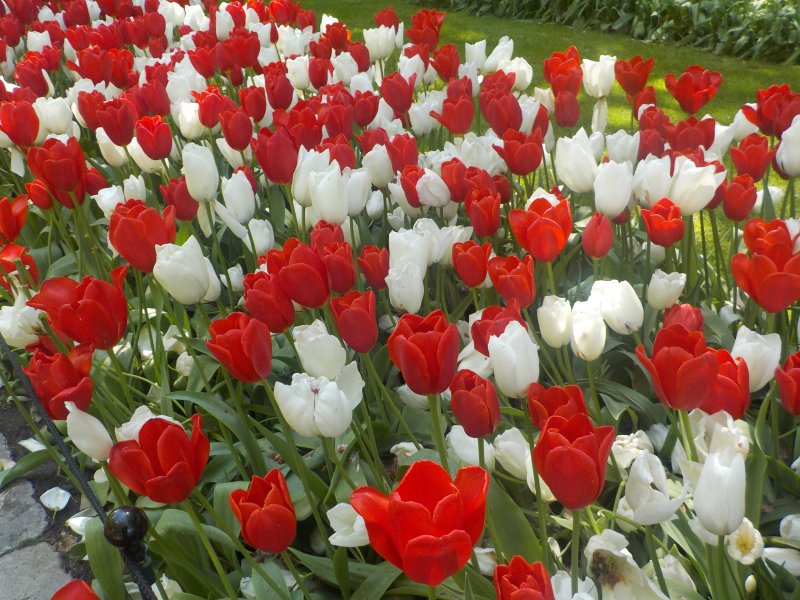
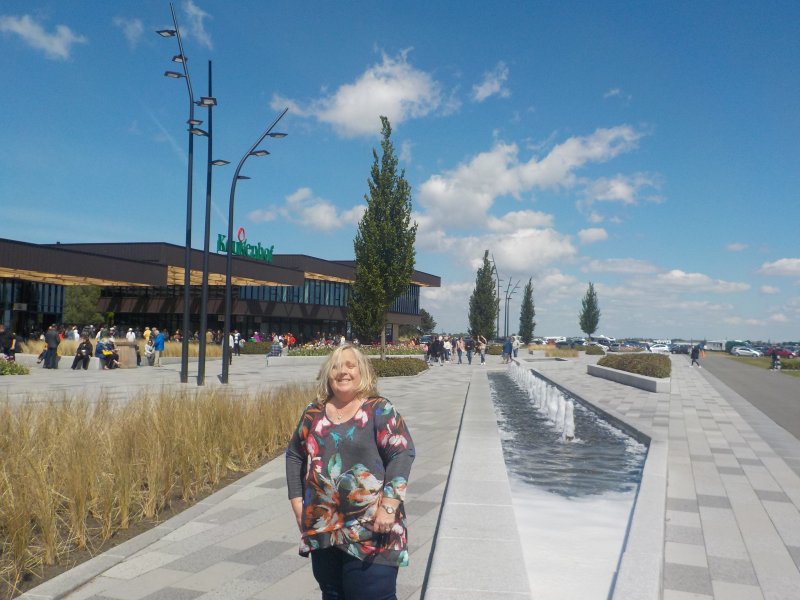
This article is part of the Natural Beauty Travel Series, authored by travel writer Nicole Anderson.
Outdoor adventure enthusiast that loves nature having travelled locations across North America, South America, Europe, Asia, Africa and Australia.
Passionate Travel Writer, Blogger and Influencer.














Leave a Reply